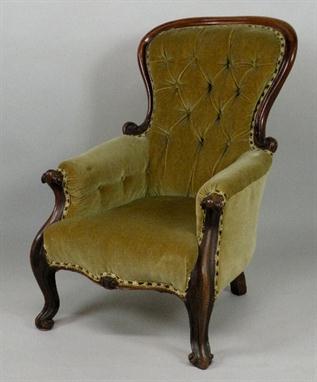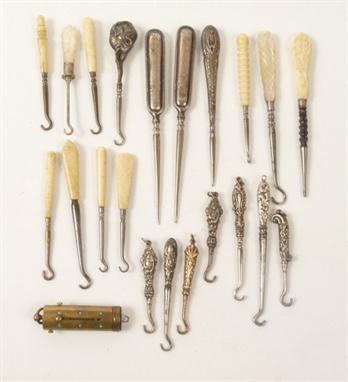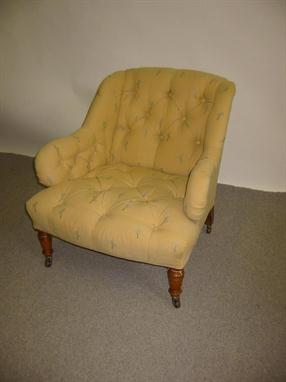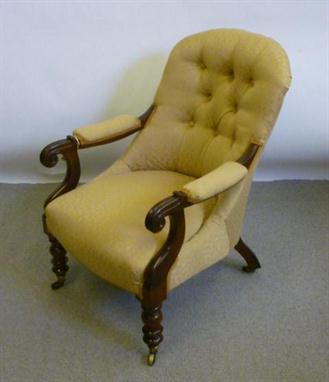We found 110990 price guide item(s) matching your search
There are 110990 lots that match your search criteria. Subscribe now to get instant access to the full price guide service.
Click here to subscribe- List
- Grid
-
110990 item(s)/page
A Chinese agate pouring vessel, yi, 18th/19th century, the rounded rectangular vessel incised with a Greek key border, flanked by loop handles with button finials, approximately 7.5cm across. In light of the changing international market practices for the auctioning of Oriental Works of Art, Dreweatts advises prospective bidders that we will require registered bidders to provide additional evidence of identity and, at our sole discretion, we may also request financial references that might include the lodging of a £2,500 security deposit by a bank transfer or debit card prior to the commencement of the sale. In the event that a deposit is sought it will be returned, without interest and at the bidder`s cost with respect to transaction charges, within 7 working days of the end of the sale. In all circumstances it is at Dreweatts sole discretion as to whether we are prepared to accept bids from any bidder and we urge interested bidders to make their sale registration applications as early as possible, and in any event no later than mid-day on Monday 19th September.
Bombay Staff Corps - A two-part waist belt clasp, 1855 pattern but with acanthus finials, centrally the crown over ïVRÍ and unit title in surround, matching bench marks ïXXXVIIIÍ, together with one only small officerÍs gilt tunic button to the same unit, c. 1856-1901. The Indian Staff Corps was a branch of the British Indian Army during Colonial rule. Separate Staff Corps were formed in 1861 for the Bengal, Madras and Bombay Armies, which constituted the Indian Army, although they were later amalgamated. They were meant to provide officers for the native regiments, and for the staff and army departments. They were also designed to offer placements for civil and political appointments for posts which Indian Army officers might be eligible. Those officers who were already employed by the Army had the option to join the Staff Corps or to stay employed under the old conditions of work. In that sense it was seen by the majority of post-1860 entrants as synonymous with the Regular Officer Corps of the Indian Army. 109th Bombay Infantry (Central India) -An officerÍs waistbelt clasp, bi-metal, gilt finish, bearing regimental device The 109th Regiment of Foot (Bombay Infantry) was an infantry regiment of the British Army from 1862 to 1881, when it was amalgamated into The Prince of WalesÍs Leinster Regiment (Royal Canadians).The regiment was originally raised by the Honourable East India Company in 1853 as the 3rd Bombay (European) Regiment, and served in the Indian Mutiny of 1857. As with all other ñEuropeanî units of the Company, they were placed under the command of the Crown in 1858, and formally moved into the British Army in 1862, ranked as the 109th Foot. As part of the Childers Reforms in 1881, the regiment was amalgamated with the 100th (Prince of WalesÍs Royal Canadian) Regiment of Foot to form The Prince of WalesÍs Leinster Regiment (Royal Canadians). Black Watch Volunteers Regiment - An officerÍs waistbelt clasp, 19th Century, bearing regimental device. The Black Watch was formed as part of the Childers Reforms in 1881 when the 42nd (Royal Highland) Regiment of Foot (The Black Watch) was amalgamated with the 73rd (Perthshire) Regiment of Foot to form two battalions of the newly named Royal Highlanders (The Black Watch). The 1st Battalion then served in Africa taking part in the Highland BrigadeÍs dawn assault on the Egyptian position at Tel-el-Kebir in 1882. Two years later it was in the thick of the fight with the MahdiÍs tribesmen at El Teb and Tamai. The following year 1885, saw it taking part in the Nile Expedition and fighting at Kirbekan and Abu Klea. 18th Regiment of Foot - An officerÍs waistbelt clasp, bi-metal, 19th Century, bearing regimental device, (4)
A late 19th Century Swiss Silver Cased Open Face Pocket Watch, the frosted gilt ¾ plate movement with mono-metallic balance, to a Roman enamel dial with outside minute track (hairline at 4), with sunk subsidiary seconds and gilt hands, in a hinged and polished case marked Fine Silver, and numbered 51510,4, width 1 7/8”; together with a base metal graduated curb link Watch Chain with T-bar and Swivel (2) 1098. A 1st quarter of the 20th Century Silver Cased Open Face Pocket Watch, unsigned, 500751, the frosted gilt movement with bi-metallic cut compensated balance and blued steel hairspring with silvered regulation scale and blued steel screws, with finned pillars and fitted dust cover, to a Roman enamel dial (hairlines), with outside minute track, sunk subsidiary seconds and blued steel hands (hour hand A/F), in a hinged case with engine-turned back cover centred with a vacant and gartered cartouche, and coin milled band (lacking bow and button), Birmingham 1909, Maker’s Mark WF and with corresponding case number, width 2 1/8”
An early 20th Century Nickel Cased Open Face Keyless Split Second Stop Watch, “Montbrilliant”, and retailed by P Orr & Sons Ltd, Madras and Rangoon, the Swiss movement with Geneva stripe decoration and mono-metallic balance (A/F), to a signed Arabic enamel dial with outside 60 second track, with further subsidiaries for half-hour and minutes, and fitted with blued steel fly back hands, in a hinged and polished case with stop button to the band at 11, and reset through the crown, width 1 15/16”
A 3rd quarter of the 20th Century Gold Plated two button Chronograph Wristwatch, the 17 jewel movement with mono-metallic balance and plain hairspring, to a circular black dial set with four gilt subsidiaries for day, date, minutes and half-hours, with further gilt hands and fly back centre seconds, with outside minute track, in a polished circular case with winding crown flanked by two polished push buttons, and with snap-on stainless steel back, fitted with a brown stitched leather strap, width 1 ¾”
A leather toilet case, the interior with purple watered silk lining and morocco stationery book, to/w jewellery box, ink pot and vesta case, and complete with a set of eight fitted glass toilet jars with engine turned silver tops engraved with fleurs de lys, a matching six-piece brush set including handmirror and tortoiseshell comb, a button book and shoe horn, Synyer & Beddoes, Birmingham 1911. In virtually unused condition
A 19th century French gilt brass carriage clock, glazed bevelled panels, the white enamel dial with Roman numerals and subsidiary alarm marked with Arabic numerals, the 8-day twin train movement with quarter repeat button striking on twin gongs, stamped J.D. (probably Dejardin), no.6443, in original red morocco travel case, c/w numbered key, 6.5 cm high
-
110990 item(s)/page












































